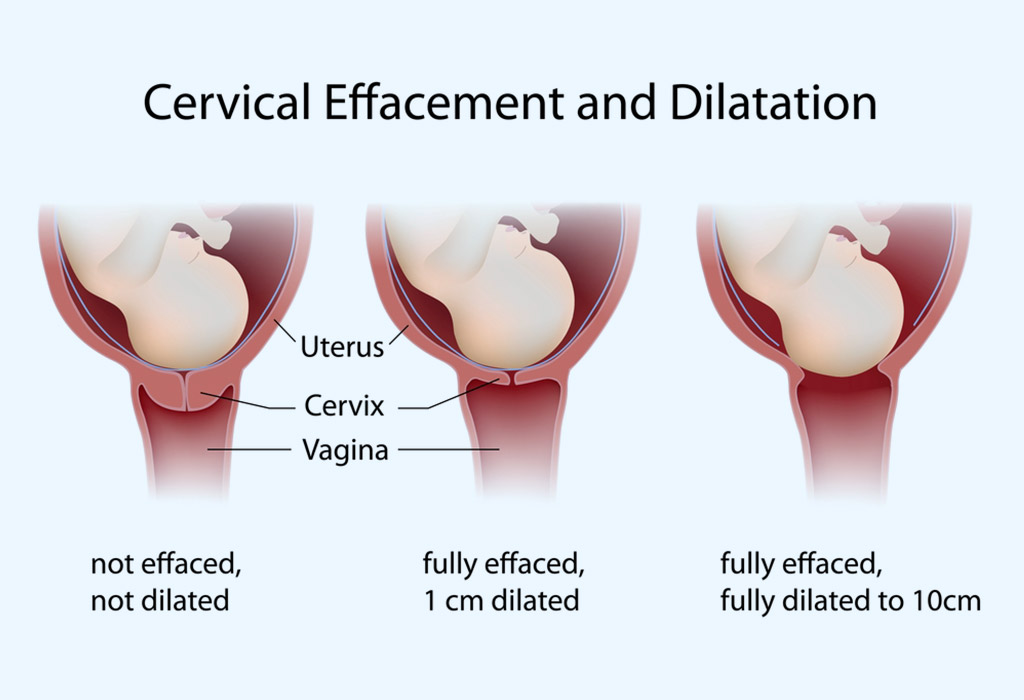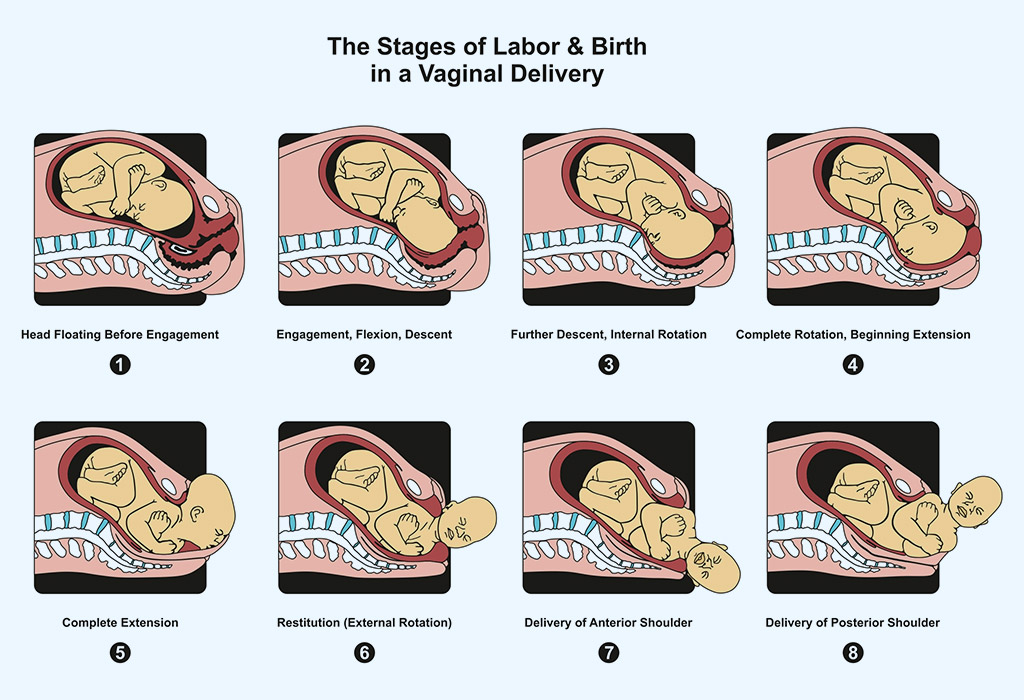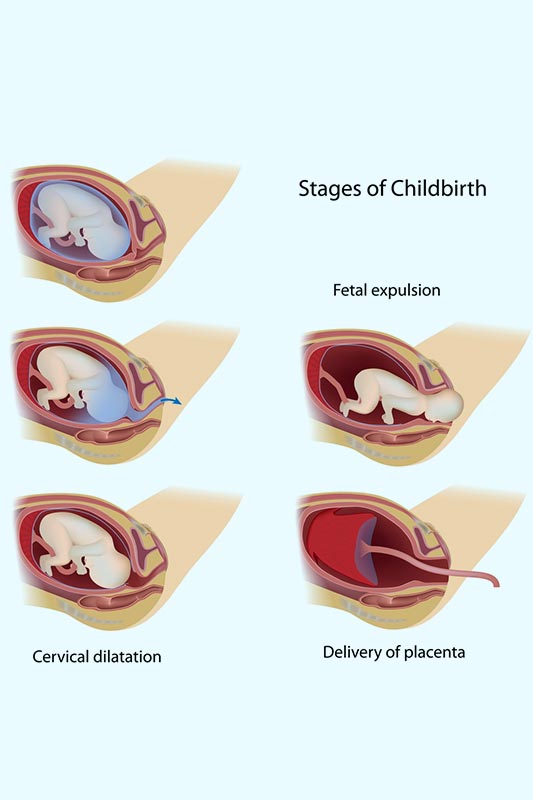In this Article
- What is a Normal Delivery?
- When is Normal Childbirth Recommended?
- Benefits of Vaginal Delivery
- Chances of a Normal Delivery for a First Time Mom
- Process of Normal Childbirth
- When and How to Push a Baby Out?
- How Long Does a Normal Delivery Last?
- What Happens When a Woman is in Labour?
- 15 Tips to Help You Have Normal Delivery
- FAQs
Is this your first pregnancy? Are you confused between what a normal delivery and cesarean birth entails ? Here are some pregnancy tips for a normal delivery and answers to the questions you have always wanted to ask about pregnancy.
What is a Normal Delivery?
Normal Delivery is the same as a vaginal birth, where there is no surgical procedure involved. Most women undergo a normal delivery, as it allows the body to recover the quickest.
When is Normal Childbirth Recommended?
A young, healthy woman can comfortably go through normal childbirth. Active lifestyle, normal blood pressure, and position of the foetus are all indicative of a normal delivery. Here is when a normal delivery is recommended.
- Between 30 to 34 weeks, the foetus changes position to a cephalic or head down position, ready for delivery. When viewed, it looks as if the baby’s position has moved down.
- The urge to urinate will increase as the pressure from the baby’s head presses down the pelvic region and squeezes the bladder.
- There will be an ache in the lower back as the foetus starts putting pressure on it (lower back). This because the foetus is positioning itself to get into the cephalic (head down) position.
- You may notice an increase in vaginal discharge. It could be white or pink and sometimes even a bit bloodstained. It is the usual sign of a healthy, normal pregnancy.
- Upset bowel movement is caused, as there is a surge in hormonal activity. There might be some cramps and discomfort due to this.
- Soreness of the breasts is also indicative of normal childbirth. As you reach the final stage, it may feel heavy and uncomfortable.
- The breaking of the water bag usually takes place during labour. Sometimes it might happen even before the onset of labour. The doctor’s advice should be taken immediately.
Benefits of Vaginal Delivery
Normal Delivery is the birth of a young one through the natural process of labour in which there is vaginal birth of the infant. The reasons why this natural birthing is much better than any other method are as follows:
1. Helps Avoid Vacuum
This is an instrument that looks similar to a plunger used in a kitchen sink. This applies suction to the head of the infant, helping it pass through the birthing canal. The soft skull is often elongated by being pulled out of shape, due to the suction of the vacuum. A vaginal birth circumvents this dangerous method.
2. Bypasses Forceps
This instrument, resembling a large salad spoon, is used to pry the child’s head out of the birthing canal. Increase in the heart rate of the newborn is one of the risks of using forceps. Other risks include minor facial injuries, facial palsy, and minor external eye trauma. Greater risks include a skull fracture, bleeding within the skull, and even seizures. A vaginal birth does not require the use of forceps.

3. Healthier for the Mother and Baby
Both physical and mental health of the mother and child receive a setback due to surgery and epidural injection on the spine. The first few minutes spent between mother and child are the first bond the child has with the outer world. The comfort of the mother’s arms and voice is reassuring after the traumatic experience the baby has with the world outside the safety of the womb. With natural birth, the child is almost instantly put into the mother’s arms. Thus, bonding is instantaneous.
4. Stimulates Lactation
The natural process of birthing stimulates many natural hormones systems in the body during labour and birth. Oxytocin, endorphins, adrenaline, noradrenaline, and most important, prolactin, the mothering hormone, are all secreted during this time.
5. Ingestion of Protective Bacteria from Birth Canal
There are changes in the vaginal microbes during pregnancy. The bacteria that the child ingests from the mother’s birth canal helps to build its immune system, and the child is better able to digest milk and solid foods. During the birth process, the human microbiota is formed, making the role of the vaginal microbiome a key role in its development.
6. Faster Postnatal Recovery
Unlike a medical intervention, the natural process allows the mother to recover quickly from the labour. The body takes its course to repair and mend to bring the body back to track. In a medical intervention, there are higher chances of infection, as an unnatural intervention will ultimately take longer to repair. Natural childbirth discounts any major surgery, and thereby, reduce the risks that accompany going under the knife.
7. Makes You Confident
The feeling of natural birthing gives the mother great confidence and achievement. Its a feeling like no other.
8. Shorter Hospital Stay
After Natural Childbirth the stay in the hospital can last from 24 to 48 hours. A C-section is different, where the stay can be from anywhere from 3 days to a week depending upon your recovery after the operation. Contrary to belief, the natural process, in general, is far shorter than medical intervention.
Chances of a Normal Delivery for a First Time Mom
Most first time mothers will deliver naturally by 41 to 42 weeks, but often, surgical intervention is done before this time, due to medical reasons.
Process of Normal Childbirth
1. First Stage
Cervix Thinning (Effacement) and opening (dilation). This might continue for an hour or so, till the cervix has dilated to 3 cm.

A. Early or Latent Phase
In this stage, the woman becomes aware of the contractions that start at an interval of every 3 to 5 minutes, but may vary.
What You May Experience: Here you might feel like going to the washroom, as the initial pains start.
What Can You Do: At this juncture, it is best to inform your caretaker that the baby is coming. If you are alone, then immediately call your doctor.
B. Active Phase
In this phase, the cervix expands from 3cm to 7 cms.
What You May Experience: There will be discomfort, as the pressure will continue to grow. It may feel like menstrual cramps and lower backache.
What Can You Do: If you are in your home, get things in order for the new addition to your family. If you are going to the clinic for the delivery, then a suitcase with the items for the newborn and yourself should be kept ready. You can also leave instructions for the work that has to be done at home if there is an elder child who will be there without you. All this planning will help distract you from getting too worried about your labour. You need to relax and be calm during this time. Some of the activities you could do to soothe the nerves include playing music and going for a short walk.
C. Transition Phase
The cervix continues to expand from 7 cms till it is fully enlarged to 10 cms.
What You May Experience: You will feel the pressure increase in the lower pelvic area, and there are chances that the water bag may break. The pain will be more intense, lasting longer, with less interval in between, and becomes quite regular.
What Can You Do: Reach the designated place of delivery. You must keep track of the contractions to see its pattern. If the water breaks, check its colour and odour, and note the time. Try breathing exercises to keep calm. It is now time to lie down.
2. Second Stage
Baby Is Pushed To Birth Canal: This is the Active Stage. During this time, the baby is pushed out of the uterus and into the world through the vaginal canal.

What You May Experience: Here, the contractions will be longer and much more intense, as your cervix would be reaching its maximum dilation. The contractions can last from 45 to 60 seconds, with only 3 to 4 minutes of respite in between. This will increase to about 1 and half minutes, sometimes less than a minute apart. This is the toughest phase, but also the shortest, as it is a race to the finish line.
What Can You Do: This might last for 3 to 5 hours. Try changing your position and get someone to massage your back. Continue to breathe in a regular pattern. Think of the child rather than the pain and do not give up pushing, as the baby needs all your help. Avoid screaming from the ‘mouth’; rather, use a throaty grunt which will help in pushing out the baby.
3. Third Stage
Placenta Is Pushed Out: The expulsion of the placenta is the third and last stage of labour. In this stage, the entire placenta comes out through the vaginal canal. Also called the ‘Afterbirth’. It is the last and final stage that ends the normal childbirth. This takes place 15 to 30 minutes after the delivery. It is a natural process,, which is sometimes manually assisted, so as to avoid infections. The lower abdomen is also massaged to contract the uterine muscles, so as to push out any remaining residue of the afterbirth.

What You May Experience: The afterbirth will be expelled out naturally, and you might feel it slip out.
What Can You Do: You can inform the attendant who will clean it out and give pressure massage to the lower abdomen.
When and How to Push a Baby Out?
Trust your instinct and also follow the instructions given to you when to push. Push like you would expel your bowels, but with all your strength. Try not to scream, as it dissipates your efforts. Rest in between the contractions and start when you feel the beginning of a contraction. You will have to stop when instructed. Stay focused.
How Long Does a Normal Delivery Last?
For a first-time mother, a natural delivery average of time should be of seven to eight hours of active labour as a norm. For consecutive births, the normal delivery will be quicker. It can be more or less, depending on dilation of the cervix. Once full dilation and crowning (the appearance of the top of the infant’s head) has been reached, pushing the child out of the birth canal can last about an hour.
What Happens When a Woman is in Labour?
There are many stages of labour, which can be followed to forecast the approximate time of delivery. They are as follows:
1. The Baby Drops
The foetus shifts to a cephalic or head down position, for its passage through the vaginal canal. The effects look as if the baby has dropped to a lower level. The bump on the woman looks as if it has ‘dropped’, giving some space between the breast and bump.
2. The Urge to Urinate Increases
The drop of the fetus takes some pressure off the lungs, but starts exerting pressure on the bladder instead. The urge to urinate increases, as the foetus gets to the head down position. The trips to the washroom will increase substantially.
3. The Mucus Plug Passes
A mucus plug forms in the cervix during pregnancy. This thick gelatinous plug is secreted so as to keep the cervix moist and protected against bacteria. As the delivery date approaches, the cervix starts to dilate. This process loosens the mucus plug, which then dislodges itself. It can be colourless, pink or even a bit bloodstained. Delivery is imminent after this, but varies from a few days to a week or two.
4. The Cervix Dilates
The cervix is the lower part of the uterus that opens out or dilates to allow the child to be passed into the vaginal tract. When it dilates to 1 centimetre, you can expect to go into labour soon. It is difficult to detect this without an ultrasound or an examination by your gynaecologist. The dilation continues to increase all the way to 10 centimetres before there is enough space for the baby to be pushed out of the uterus.
5. The Cervix Begins to Thin
The cervix is the lower part of the uterus which is elongated and closed. It is normally about 3 to 4 centimetres in length. It starts to thin or efface to allow dilation to take place. Contractions allow the thinning and dilation of the cervix till it is about 10 cm.
6. Back Pain Begins or Worsens
This pain is due to the position of the baby’s head. During labour, the head of the baby puts pressure on the tailbone of the mother in its attempt to move out. This pressure causes a severe backache.

7. The Contractions Begin
This means that the baby is putting pressure on the birth canal. The contractions are in the form of soft rhythmic movements from the top to the lower part of the uterus in an attempt to push out the baby.
8. A Burst of Energy
There will be a burst of energy due to adrenaline and noradrenaline being pumped into the blood stream. These are the ‘fight or flight’ hormones that infuse a surge of energy for the last strong contractions, which ultimately push out the baby.
9. Bowel Movement Urges Increase
It is common have the urge to poopwith the onset of labour. The initial stages of labour might seem like an urge to pass bowels, but as the pain intensifies, both pains are distinguishable. The bowels clear themselves out so as to clear space for the baby pushing against the pelvic girdle. Just before the onset of labour, the woman is advised to have an empty stomach. In some cases, an enema is administered to the woman just when labour starts, so as to avoid any faecal matter from being discharged during labour. This is to avoid any danger of the mother or child contracting an infection.
10. The Water Breaks
During pregnancy, the foetus is enclosed in a thin membrane sac of fluid called the amniotic sac. This keeps the foetus safe and in a pristine floating state. With the beginning of labour, this sac breaks, spilling out this colourless liquid. This is one of the signs of active labour and a call to the doctor is in order.
15 Tips to Help You Have Normal Delivery
Motherhood is a dream come true for many women, both young and not so young. Normal delivery was the norm till the idea of medical intervention for, presumably, an easier delivery was introduced. Now, more than ever before, women have realised the benefits of a normal delivery Here are some tips to avoid cesarean that can be followed to have a safe and wonderful experience of motherhood, for not only the mother and child, but also for the father and the extended family:
1. Read about Pregnancy and Labour
Being prepared for the future and your role as a mother is essential for a normal delivery. It is essential to have scientific knowledge of the various kinds of methods used for delivery so that your choice is guided by knowledge and not emotions or fear.
2. Do Research on Hospitals that Specialise in Natural Childbirth
There are various birthing options available, and background research on the best possible methods should be done with due diligence.
3. Always Remain Positive and Happy
Being positive and happy goes a long way in preparing you for normal delivery. Worrying about the worst-case scenario is detrimental to your mental health and affects the unborn child, as well.
4. Avoid Gaining Too Much Weight
Make sure you eat sensibly, so that you do not gain unwanted weight. Gaining approximately 12 kilos is normal during pregnancy. When there is an excessive weight gain, it can adversely affect the health of both the mother and child, due to secondary reasons such as gestational diabetes, high blood pressure (gestational hypertension), and pre-eclampsia or problems with the placenta. Apart from this, your labour may set earlier than usual.

5. Try Swimming
Swimming is the best exercise for an expectant mother. Using a safe chlorinated swimming pool with a caretaker at hand can be done even till the date of delivery. In fact, many women opt for a water birth. The foetus spends the entire gestation period in a sac of amniotic fluid, making it feel comfortable in water.
6. Walk Everyday
Always keep moving. Walking is the best exercise for anyone, especially pregnant women. A 30 minute walk, five times a week, will keep you healthy. Walking once in a while is not adequate to bring about a phenomenal change, so it has to be regular. Adults, including pregnant women, need to walk about 10,000 steps a day.
7. Do Kegel Exercises
These are simple exercises in which the pelvic floor muscles are clenched and released to make them stronger. This area supports the uterus, bladder, small intestine, and rectum. The contracting and relaxing of these muscles make them stronger. It can be done during pregnancy to help control any urinary inconsistency. Most doctors recommend Kegel exercises during the third trimester of pregnancy, so as to usher in a smooth and natural delivery.
8. Do Pelvic Stretches
During pregnancy, the muscles of the pelvic region become soft, so as to allow delivery of the child. Pelvic stretches help to make the delivery smooth and strengthen the pelvic floor area even after delivery.
9. Practice Yoga
Daily practice of this ancient art will lighten your spirit and strengthen the breathing pattern of the expectant mother. Safe Yoga for vaginal birth helps the mother relax and strengthens her body to prepare for the natural delivery. Meditation also prepares the mind for the challenges of labour and childbirth.
10. Drink Lots of Water
Drinking water helps to flush out toxins from the body. The water also dilutes urine, and so, reduces chances of a urinary infection, which is common during pregnancy. Dehydration may cause the onset of preterm labour, so being hydrated is essential. Approximately ten glasses of water a day is beneficial for an expectant mother.
11. Wear Flat Comfortable Footwear
It is important to be comfortable. The added weight on the front of the body changes the centre of gravity. There is pressure on the curvature of the spine, knees and legs. Wearing high heeled shoes can make the burden on these areas excessive leading to backache and knee or leg pain. Heels also make you unstable with the danger of falling over and hurting yourself and the child.
12. Squats
Low impact exercises for normal delivery, like squats, help in strengthening your core muscles. These include the pelvic floor muscles, the gluten and the hip muscles. If you are healthy and have a normal pregnancy, then this form of routine will help in ensuring a normal delivery.
13. Sleep
A good night’s sleep is a good way to be refreshed and help the foetus to be healthy. The body changes every day, and the energy and the resources of the body go first to the baby and then to the mother. An expectant mother needs two to three extra hours over and above the mandatory eight hours of sleep for a healthy adult. A strong mother and child will guarantee natural delivery.
14. Breathing
The Lamaze Method was propagated by a French Obstetrician called Lamaze in the use of regulated breathing to cope with the labour and relax the foetus.
15. Eat The Right Type of Food
Your health and that of your baby is what you eat, so always eat healthy food for normal delivery. Nutrition and hygiene are important to have a healthy foetus. The baby needs to be strong if it has to go through normal delivery. Food like coconut, fresh fruits, lean meat, and fresh fish should be favoured by the expectant mother. Avoid food that is too oily and deep fried. Home remedies for normal delivery can include various herbs like turmeric and ginger tea to feel refreshed. Also, to be avoided are overly spicy and aerated drinks. Liquor, hard drinks, smoking and drugs are a big taboo and should be avoided at all costs.
FAQs
1. Can the Baby’s Position Be Determined Based On Movements?
It is very vital to know the position of the baby, especially as the delivery date approaches. For a normal vaginal delivery, the baby should be facing down, with its head angled towards your spine. You can tell the position of the baby by its movement. Keep in mind that the strongest movements are from the baby’s hands and feet.
- If the baby is looking forward, face up then you will feel the movement under your ribs.
- If it is already in the posterior position, head downwards looking out, you will feel the kicks in the front part of your tummy.
- Gently press your tummy and feel the child move. It is most probably in the cephalic or head down position.
- If you feel the hard-rounded lump of the child’s head under your rib, then it is in a breech position, which means its feet are positioned to come out first.
- Watch the movement under the skin. You will be able to discern the fists and feet of the baby, as it pushes itself against the uterus wall.

2. How Painful is Vaginal Childbirth?
The pain during normal delivery is based on the physical health, anxiety, body positioning, training, and nutrition of the mother. The natural birth process involves the child forcing its way out of the uterus. This is a normal procedure as nature designed it. Therefore, the recovery from it is quicker. There will be a pain, but with the right preparation, it is bearable and has been so for centuries. The more physically active the mother is, the easier the delivery will be.
3. What Are the Chances of a Vaginal Delivery After a C-Section?
The C-section leaves scarring on the uterus wall tissue. It is the formation of fibrous tissue that replaces the normal skin after an injury and is the natural process of healing. This may cause tough tissue bands to form. Research shows that even though about 60 to 80 percent of women who try vaginal delivery after a caesarian are successful, the most concerning risk would be that of a uterine rupture. This is when the uterus ruptures or tears along the healed scar of the previous surgery. In this case, there would be an emergency operation and even a hysterectomy to stop the bleeding. The doctor’s advice is essential if there has been a Caesarean Section for the first offspring to avoid excessive bleeding, sn emergency procedure, and in some cases, even fatality.
Contrary to popular belief, normal delivery is relatively safe in most instances. Thousands of years of evolution have perfected the design of the female body to do just that. It is only in extreme cases, such as the baby’s head being too large, etc., that other methods are used.









